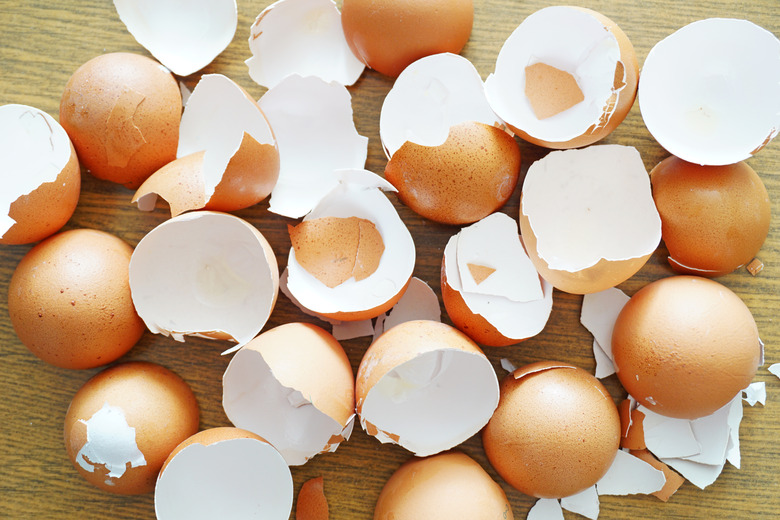What Are The Similarities Between Eggshells And Teeth?
Teeth and eggshells differ in many key ways, such as function, shape and formation. That said, both of the hard, white substances share similarities in terms of their chemical composition, their hard but brittle natures, and their reaction to other chemicals. Functionally speaking, different species produce each substance as a protective measure for something softer, either an embryo or the dentine and nerves in a tooth. Most egg-laying creatures form eggshells out of calcite, a form of calcium carbonate, while tooth enamel forms from calcium phosphate.
TL;DR (Too Long; Didn't Read)
Aside from their color, eggshells and the enamel of teeth contain similar chemical compositions: calcium carbonate, and calcium phosphate, respectively. However, they differ in terms of formation and function.
How Eggshells and Teeth Are Similar
How Eggshells and Teeth Are Similar
Human teeth have several layers that each perform a different function. Humans brush the outermost and hardest layer, called enamel, which protects the inner workings of a tooth including the ameloblasts, specialized cells that secrete the enamel. Enamel is around 95 percent mineral compared to most bones, which are roughly 50 percent mineral, and it is the hardest substance created by the human body. While humans evolved this hard enamel for biting and crunching, birds and other hard egg-laying species evolved to produce eggshells to protect their young as they develop from the embryonic stage. Both enamel and eggshells are relatively thin but contain calcium-based compounds for their structure: calcium carbonate for eggs and calcium phosphate for enamel.
Because they share a similar composition, similar chemicals affect their structures in positive or negative ways. For example, fluoride – a staple in many dental practices – strengthens both enamel and eggshells and helps protect them from acids. Acids weaken and break down both substances. Scientists find this particularly concerning given that the ocean is growing increasingly acidic. They fear this may weaken the eggs of some marine species and harm their chance of survival. Most dentists recommend limiting aggressively acidic foods and beverages such as soft drinks.
Differences Between the Two
Differences Between the Two
While enamel forms from a process called Amelogenesis, which happens regularly in the mouth, eggshells form in a bird's oviduct. The bird secretes the compounds and various other membranes over its embryo as part of its regular reproductive cycle. Healthy human mouths constantly recreate and repair enamel, but eggshells cannot be repaired because they exist outside the bird that laid them. Their shapes, too, appear noticeably different. For example, an egg's shape is such that it has resistance to being crushed from its top to bottom, while the shape enamel takes depends on the tooth on which it grows. An eggshell is designed to be semipermeable to allow gasses in and out of the egg. Enamel, in its ideal form, has no holes. When it does, hot and cold temperatures can cause pain when they contact the inside of the tooth including its nerve.
References
- Monographs in Oral Science: Understanding the Chemistry of Dental Erosion
- Science of Cooking: Anatomy of an Egg
- Web MD: Picture of the Teeth
- Smithsonian Institute: Eggshell Acidity Experiment
- Harvard University: Egg Shell Strength
- University of California San Francisco: Tooth Enamel: Nature's Crowning Achievement
- University of Wisconsin Madison: What Are Teeth Made Of?
- Canadian Dental Association: EggSperiment Activity
- University of California Museum of Paleontology: Introduction to Eggshells
- University of Illinois: How a Hen Lays an Egg
Cite This Article
MLA
Johnson, Doug. "What Are The Similarities Between Eggshells And Teeth?" sciencing.com, https://www.sciencing.com/similarities-eggshells-teeth-8427281/. 27 April 2018.
APA
Johnson, Doug. (2018, April 27). What Are The Similarities Between Eggshells And Teeth?. sciencing.com. Retrieved from https://www.sciencing.com/similarities-eggshells-teeth-8427281/
Chicago
Johnson, Doug. What Are The Similarities Between Eggshells And Teeth? last modified August 30, 2022. https://www.sciencing.com/similarities-eggshells-teeth-8427281/
